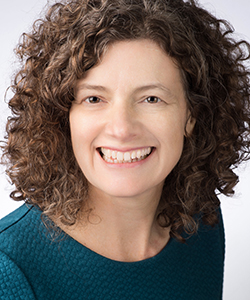I am surrounded by long-distance runners, people who love to race and set goals and meet them. I attend enough marathons to have a well-worn spectator routine and a series of vocal exercises to get myself in shape for serious cheering. Recently, my husband and his sister were discussing the merits of different marathon preparation programs. Can a person run just three times a week and meet a rigorous goal? How many 20-mile runs do you really need? The two of them don’t agree about what works. When I think about the other half-dozen family members who run marathons, I realize none of them would agree about what works. One relies on an MP3 player with a pacing program. Another piles on more miles in a week than I do in a month. The most successful in the pack has the best training program of all — he’s 19, confident, and gifted.
Here is what they have in common: They have set high standards for themselves, and when they don’t meet their goals, they adjust what they do in order to improve. Like educators planning professional learning, they turn to evidence to determine their strategies. Evidence for them includes the literature on marathon preparation, hearing what the pros do, and examining the results of past efforts.
Like educators planning professional development, runners need to consider their context when they choose strategies for meeting high standards. How do you juggle running with a demanding job? College? Injuries? Icy roads? Context is important, and even with research and successful strategies in hand, those who succeed can’t ignore what they know about their specific situation. They skillfully take those factors into account as they set their path to success.
“What works” is a loaded phrase. It almost sounds like a moneyback guarantee. As we weighed our plan for this issue of JSD, we talked about what we mean by what works. What works according to whom? Where? Under what conditions? Our goal in JSD is always to feature models and practices that have shown positive results for students. At the same time, we know that every member faces a unique set of circumstances.
We’re not prepared to offer any guarantees, but we are prepared to share essential information about several leading practices in professional development. We hope that readers will use this issue as a starting point to continue their research. The process of identifying what works in professional learning starts with identifying the most pressing student needs and continues through a cycle that includes evaluating the results of any adult and student learning initiatives.
In this issue, we recognize a bittersweet transition. Bob Garmston, a JSD contributor for more than 20 years, has authored his last column on collaboration skills. Readers have counted on his column for practical advice on working in teams and insight on skillfully negotiating difficult topics. NSDC appreciates his dedication to the organization and his valuable contributions as a leader in the field of professional learning. We send our best wishes to Bob. I welcome your feedback on JSD anytime.

Tracy Crow served as chief strategy officer for Learning Forward.
Recent Issues
LEARNING DESIGNS
February 2025
How we learn influences what we learn. This issue shares essential...
BUILDING BRIDGES
December 2024
Students benefit when educators bridge the continuum of professional...
CURRICULUM-BASED PROFESSIONAL LEARNING
October 2024
High-quality curriculum requires skilled educators to put it into...
LEARNING TO PIVOT
August 2024
Sometimes new information and situations call for major change. This issue...









